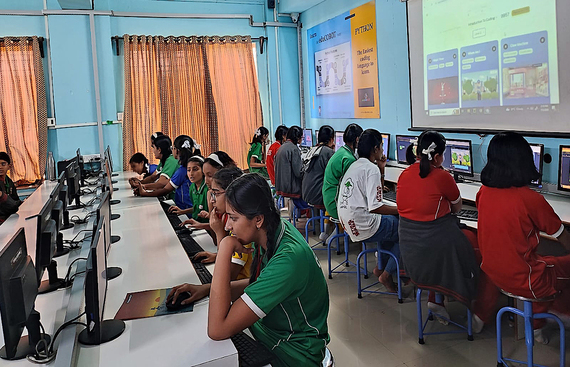Breaking Barriers: Making STEM Education Accessible to All

India, February 6, 2025: As the world embraces technological advancements at an unprecedented pace, Science, Technology, Engineering, and Mathematics (STEM) education has never been more essential. It is the foundation upon which future innovations are built. However, access to quality STEM education remains a significant challenge, especially in underserved communities and schools with limited funding. Ensuring that all students have the opportunity to engage with STEM is vital for preparing them to thrive in an increasingly digital world.
The Challenges in STEM Education Accessibility
STEM education requires more than textbooks—it demands hands-on learning experiences, specialized tools, and trained educators. However, many schools face considerable obstacles:
- High Costs: Advanced tools like robotics kits, artificial intelligence software, and IoT devices are crucial for hands-on STEM education but can be prohibitively expensive.
- Lack of Expertise: Many teachers, particularly in rural or underfunded schools, often don’t have the specialized training needed to teach emerging fields like robotics, coding, and AI.
- Limited Resources: Many schools lack the necessary infrastructure, such as reliable internet access or dedicated labs, to support effective STEM learning.
Approaches to Closing the Gap
![]()
Across the globe, many organizations and platforms are developing innovative solutions to make STEM education more accessible and affordable. These solutions focus on providing schools with the tools, training, and resources needed to engage students in meaningful STEM learning.
Affordable robotics kits, coding platforms, and AI tools designed for ease of use are among the most valuable resources. Platforms like eduCOBOT, VEX Robotics, Sphero, and Kano are helping to address the financial and logistical barriers many schools face by offering low-cost, hands-on learning tools. These platforms allow educators to introduce students to robotics, coding, and even artificial intelligence, regardless of their school's budget or the teacher's prior experience. These tools help students learn by doing, building essential skills such as problem-solving, critical thinking, and teamwork.
Beyond the tools themselves, many of these platforms also provide educational resources for teachers, such as online courses, instructional guides, and workshops. By offering support for educators, these platforms ensure that teachers can confidently integrate STEM into their classrooms, even if they haven’t taught these subjects before.
Empowering Educators and Students
One of the most significant challenges in expanding STEM education is ensuring that teachers feel confident and prepared to teach these complex subjects. Many teachers want to inspire their students with STEM but lack the training or resources to do so effectively.
That’s where accessible platforms come in. Affordable, easy-to-use robotics kits, coding platforms, and AI tools allow teachers to integrate STEM into their classrooms without requiring specialized expertise. By using these resources, educators can engage students in hands-on projects that promote collaboration, creativity, and critical thinking—skills that are essential for success in the modern world.
These platforms also offer extensive support for teachers, from online courses to professional development workshops, ensuring that they have the tools they need to teach STEM with confidence.
Real-World Impact
Across the world, schools are turning to innovative solutions to overcome the barriers to STEM education. In many underserved areas, educators are introducing affordable robotics kits and coding tools into their classrooms. These hands-on learning experiences help students grasp complex STEM concepts and develop the skills they will need in the future.
Even in schools with limited resources, creative solutions are making a real difference. With the help of affordable tools like those from eduCOBOT, VEX Robotics, Sphero, and Kano, students in these schools are gaining exposure to the kinds of technologies that were once out of reach. These experiences give them a competitive edge, whether they go on to higher education or enter the workforce.
The Road Ahead
Closing the STEM education gap requires more than just providing affordable tools—it will take collaboration across multiple sectors, including education, technology, and government. Platforms that offer affordable robotics kits, coding software, and teacher training programs are playing a crucial role in making STEM education accessible to more students. However, continued innovation and cooperation will be key to ensuring that all students, regardless of their background or location, have the opportunity to engage with STEM learning.
As we move forward, it’s essential to keep developing new solutions, providing ongoing teacher training, and fostering partnerships between communities, educators, and tech platforms. With these combined efforts, we can build a more inclusive and equitable STEM education ecosystem that prepares all students for the future.
